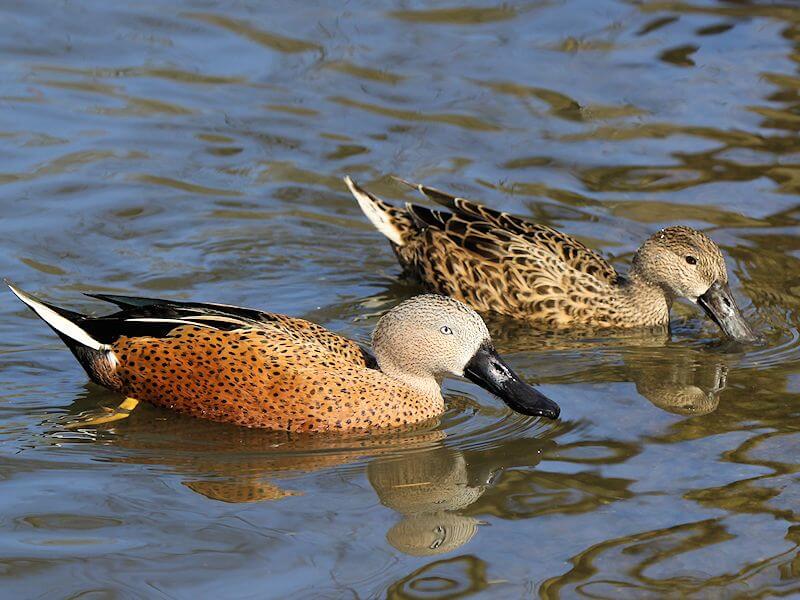Red Shoveler

Scientific Name:
Spatula platalea
Alternative Names:
Red Shoveller, Shoveler Duck (South America)
Measurements:
| Feature | Male | Female |
|---|---|---|
| Length | 45–56 cm (18–22 in) | 45–56 cm (18–22 in) |
| Weight | 523–608 g (1.15–1.34 lb) | Slightly lighter |
| Wingsspan | 66–73 cm (26–29 in) | 66–73 cm (26–29 in) |
Status
A native of southern South America and still common in many areas. It is listed as Least Concern by the IUCN.
Identification
A medium-sized duck with a wide, spoon-shaped bill. Males have reddish-brown bodies, pale blue wing patches, and a green speculum. Females are mottled brown with a dark, broad bill. Both have pale blue upper wings and a long neck.
Voice
Males make soft wheezy whistles, while females give a quiet quacking sound.
Diet
Feeds mainly on aquatic plants like pondweed, grasses, algae, and eelgrass. Also eats small insects and tiny aquatic animals filtered through the bill.
Distribution
Found from Tierra del Fuego in the south up through Chile, Argentina, and the Falkland Islands. Smaller groups also live in parts of Peru, Bolivia, Paraguay, Uruguay, and southern Brazil.
Habitat
Prefers shallow lakes, marshes, reed-filled ponds, brackish lagoons, estuaries, and quiet coastal wetlands.
Breeding
Pairs form during the winter. The female lays 7–8 eggs in a nest hidden in vegetation. Incubation lasts 25–26 days, and ducklings fledge in 40–45 days.
Wintering
Partially migratory—birds from far south move north during winter, while others stay year-round in milder areas.
Conservation
Although not endangered, the species is affected by wetland loss, pollution from farms, and cattle trampling nesting sites. Protecting wetlands is important to keep their numbers stable.
